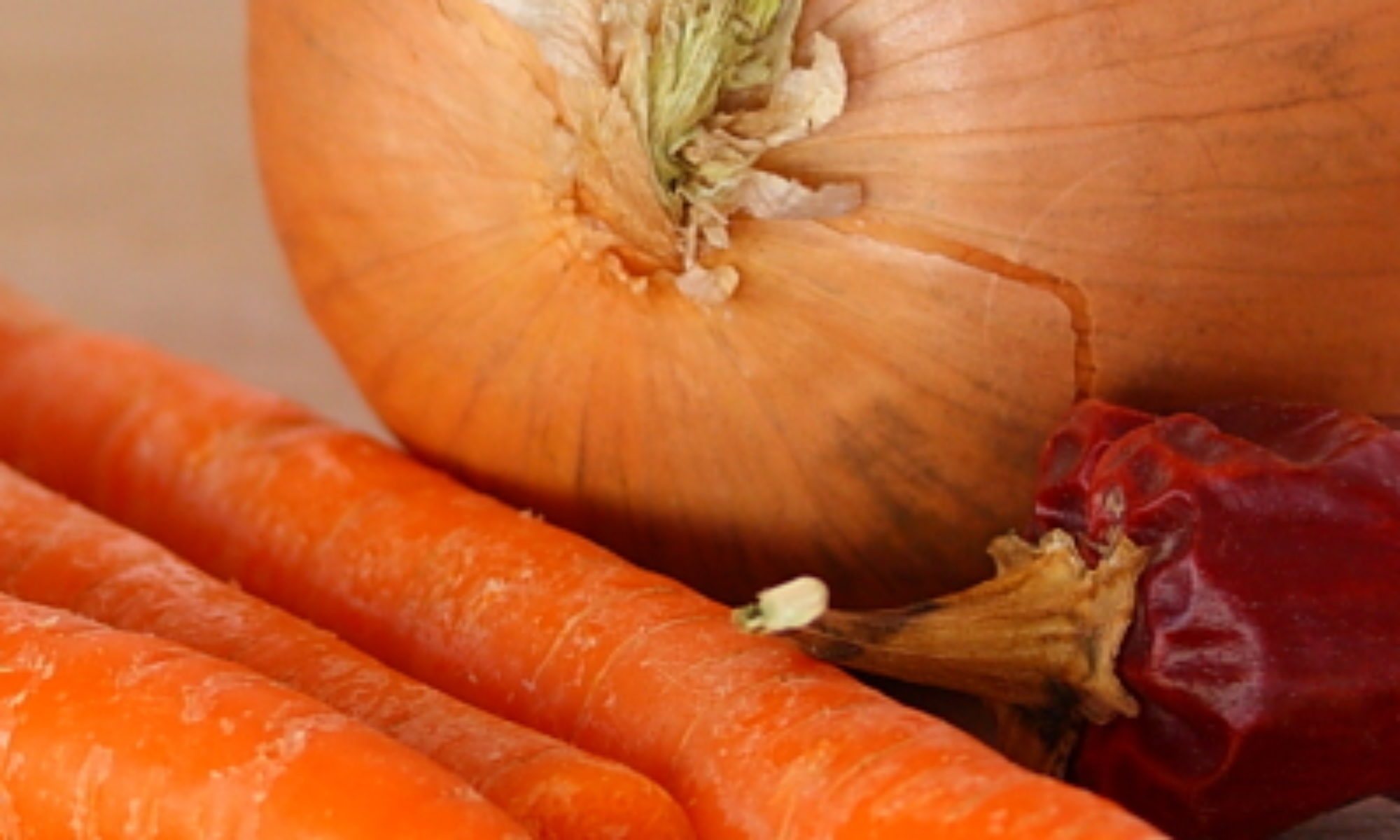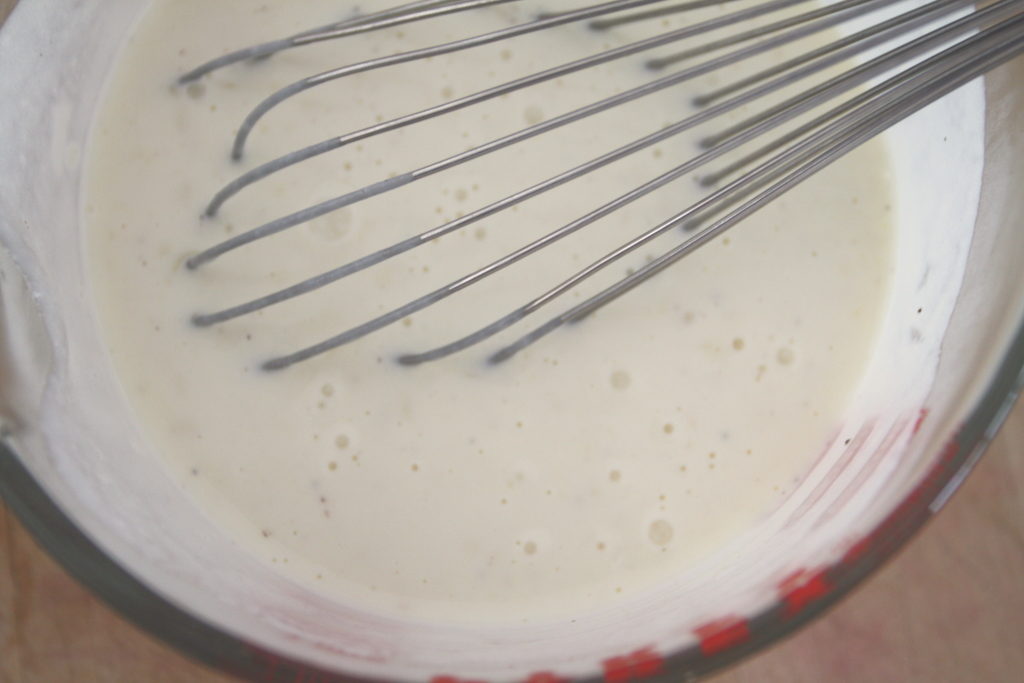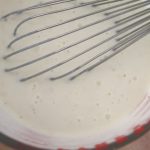
Mornay sauce? That sounds fancy! It does sound fancy, but, really, it’s nothing other than a Bechemel sauce with cheese added; a cheese sauce, in other words. Now, we’ve done that any number of times; sometimes we mention it while we’re describing how to make a certain dish — most often macaroni and cheese of some sort — but, we’re sure that sometimes we just blast right through the recipe without pointing it out. So, why are we writing this up as a separate recipe?
We wanted to do this as a separate recipe, one, because this version is a bit more complex than many of the sauces we’ve made in the past. In particular, it’ll give us the opportunity to show you how to make and use a heat diffuser or flame tamer. Second, this recipe is originally from Thomas Keller, although we did modify it slightly: the original called for 2 cups milk and 1 cup heavy cream. We didn’t have enough heavy cream in the house, so we improvised; feel free to change it back when you make it.
Finally, tomorrow we’ll show you a great use for Mornay sauce, but you can also use it as the sauce in macaroni and cheese, or any place you need or want a cheese sauce.
Mornay Sauce
Ingredients
- 3 Tbs unsalted butter
- 1/2 cup diced onion
- Kosher salt
- 3 Tbs all-purpose flour
- 1 cup milk
- 2 cups half-and-half
- 1 bay leaf
- 4 black peppercorns
- 4 whole cloves
- Freshly grated nutmeg
- Freshly ground black pepper or white pepper, if available
- 1/3 cup grated Gruyere cheese or other strong cheese, such as Parmesan, Comte, or Emmental
Instructions
- Place a heavy-bottomed saucepan on a heat diffuser over medium heat.
- Add butter. When melted, add onions and cook, stirring occasionally until translucent but not browned, about 3 minutes. Add flour and continue to cook, stirring continuously, making sure the flour doesn't brown, for another 2 minutes.
- Add milk and half-and-half, and, whisking often, bring to a simmer, about 15 minutes.
- Add bay leaf, cloves, and peppercorns. Move pan to one side of the diffuser, and simmer, whisking often so the mixture doesn't stick, for 30 minutes. Remove from heat.
- Taste, add nutmeg, salt, and pepper as needed.
- Strain sauce through a fine mesh strainer. Add cheese and whisk until smooth.
- Use immediately, or place a piece of plastic wrap on the surface and refrigerate until needed.
Ingredient discussion:
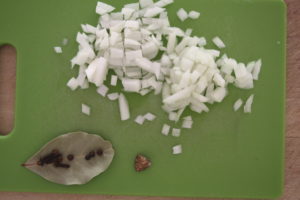
We’d recommend that you use organic milk and half-and-half when you can (we don’t always). Why? If you compare the ingredients list for organic and non-organic, you’ll find that the non-organic has things other than milk and cream. Things like Sodium Citrate and Disodium Phosphate. We don’t think these are needed in Mornay sauce.
Oh, the onions, bay leaf, cloves, and peppercorns are there to add some flavoring to your Mornay sauce. You could add other flavorings, too. Perhaps garlic, or a pinch of curry powder, depending on how you plan to use the sauce.
Procedure in detail:
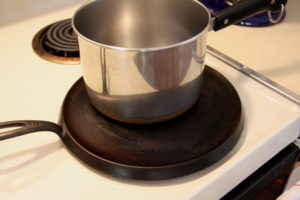
Construct heat diffuser. So, what’s a heat diffuser? It’s simply a metal disk or rectangle that you put between the burner and the pan. It helps to spread the heat evenly across the bottom of the pan, eliminating hot spots where the sauce will stick and burn. Now, you could buy one, but, we bet that you already have a heat diffuser in your house: a heavy-bottomed skillet! Simply place a heavy-bottomed skillet on the burner and set your saucepan on top! Turn the burner to medium, add the butter, and wait until it melts.
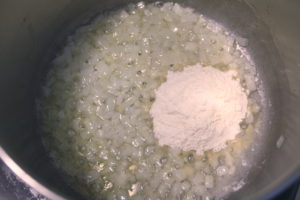
Cook onions. Add the onions and cook, stirring or shaking the pan often so the onions don’t brown, until they’re turning translucent, about 3 minutes. You don’t want the onions to brown for this sauce; it’s a white sauce, so no browning.
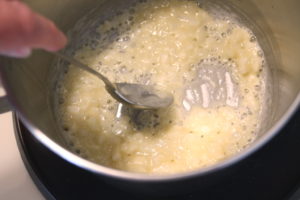
Cook flour. Once the onions are cooked a bit, add the flour and cook, stirring continuously, for about 2 minutes more. Again, don’t let the flour stick or brown. Not even a little brown.
Add dairy and simmer. Pour in the milk and half-and-half, and whisk into the flour mixture (basically, a roux). Continue heating, whisking often, until the sauce thickens slightly and comes to a simmer.
Add seasonings. Once simmering, add bay leaf, cloves, and peppercorns. If needed, lower the heat slightly and move the saucepan over to one side of the heat diffuser to keep it barely simmering.
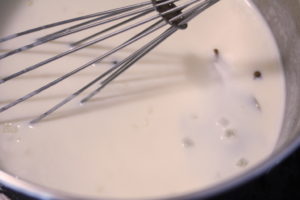
Simmer. Allow the sauce to simmer for 30 minutes, whisking fairly often to ensure that it isn’t sticking to the bottom of the pan. The heat diffuser really helps by preventing those hot spots where the sauce would start to stick. After 30 minutes, remove from heat.
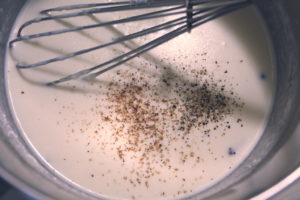
Adjust seasonings. Add nutmeg, salt, and pepper to taste. Fresh nutmeg is quite assertive, so make sure to use just a pinch. Ideally, you want just a hint of nutmeg to compliment the other flavors.
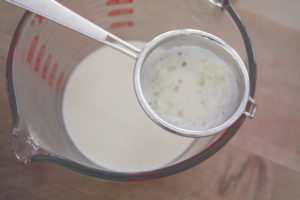
Strain. Strain the sauce through a fine mesh strainer to remove and discard the onion bits, the peppercorns, any lumps of flour, and so on. Do this while the sauce is still hot, so it’ll melt the cheese in the next step.
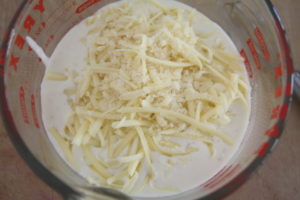
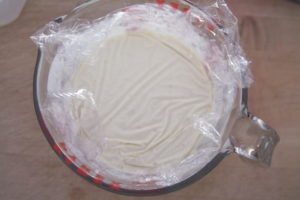
Whisk in cheese. Add the cheese and whisk until smooth. You can now use the sauce immediately, or you can save it for a few days by placing a piece of plastic wrap directly on the surface (to prevent a skin from forming) and refrigerating. When needed, reheat gently, adding a bit of milk, if needed, to thin.
Tomorrow we’ll show you what we did with some of our sauce — it’s a traditional use for Mornay sauce, but one we didn’t think of until we had this dish when we were in San Francisco. We will say that this Mornay sauce was a bit more trouble than what we normally make it, but we’ll also say that it was better-tasting all around. We think that this might become our standard version of Mornay sauce, and we’ll definitely make it for those special dishes. Five stars.
